It was once eastern Ontario's 'premier' walleye lake — and could be again
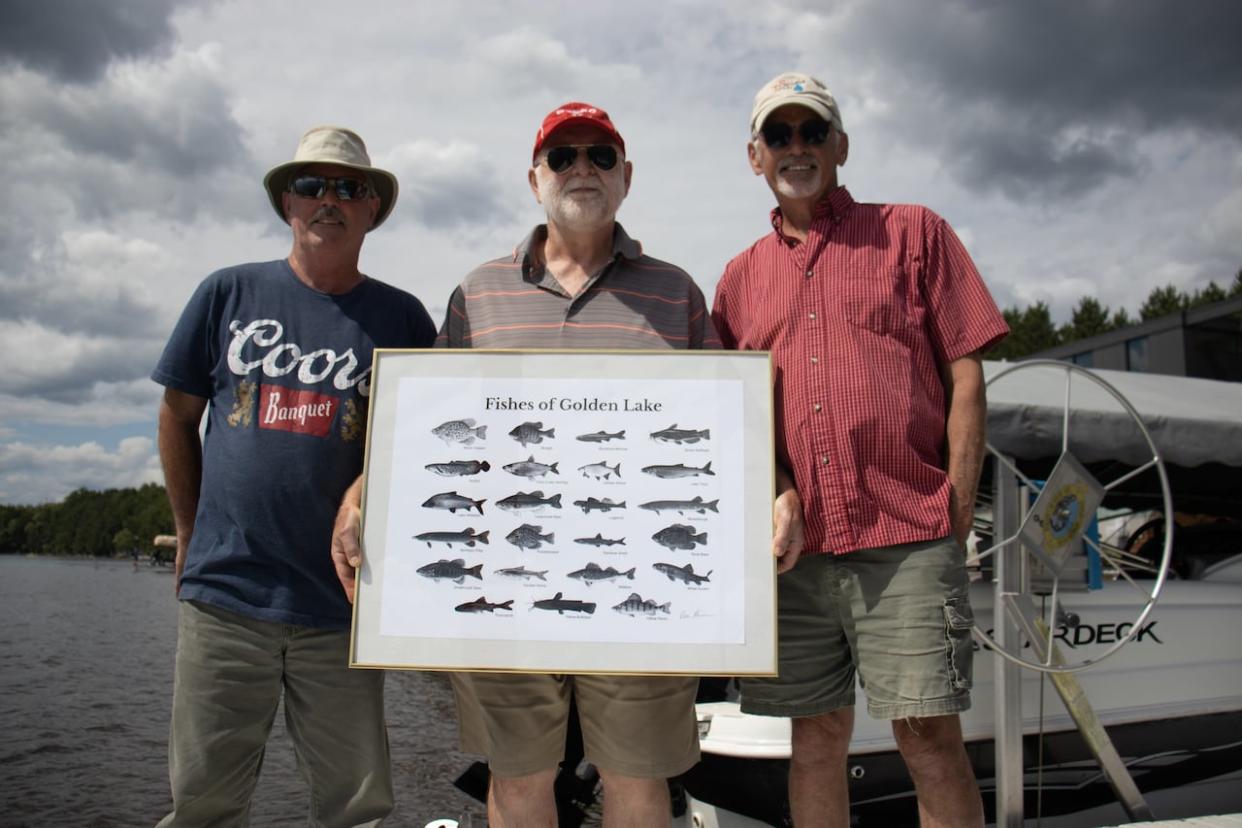
Don Bishop remembers the days when you could head out onto Golden Lake and be almost certain of hauling in a walleye for dinner.
"We'd be pretty much guaranteed, 100 per cent of the time, that we could catch walleye to eat," said Bishop, who's lived along the eastern Ontario lake for the past 35 years.
"[Now] you could fish hard all year, and you'd be lucky to maybe catch one or two."
Up until the late 1970s, the lake roughly 150 kilometres west of downtown Ottawa was considered one of the top destinations in the region for the popular game fish.
But the population declined sharply in the 1980s and 1990s, and then walleye fishing was halted from 2002 until 2007 so the stocks could be rehabilitated.
Even so, numbers remain far from their historical highs. But Bishop, who spent 25 years working in the aquaculture industry and is now co-chair of the Golden Lake Property Owners Association's fish committee, has a plan to revitalize the lake — one he's confident could be put to use elsewhere, too.
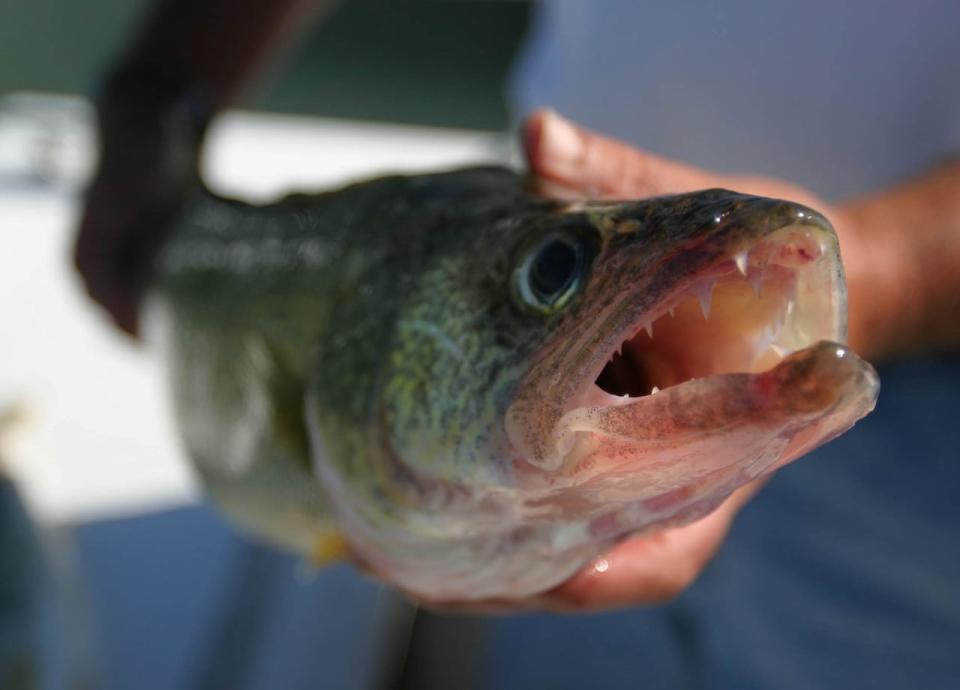
A prized game fish, walleye was once abundant on the eastern Ontario lake. But the numbers have declined steadily since the 1970s. (Daniel Miller/Associated Press)
The problem
The problem isn't that there are no walleye in Golden Lake.
According to Bishop and committee co-chair Peter Heinermann, it's that the young walleye that hatch are mostly too puny to survive the vicious onslaught of millions of much larger rainbow smelt.
"Smelt are voraciously carnivorous. And they love to eat the eggs and … the first-year offspring of most of the fish in the lake," said Heinermann, a retired staff member with the University of Ottawa's biology department who holds a PhD in fish biology.
Heinermann has pored over annual fish stocking data for Golden Lake. He's found the province has mostly stocked the lake with immature walleye, including "eyed" eggs — embryos with the eyes peeking through — and spring and summer fingerlings, juvenile fish just a few centimetres long.
But 1946 was an anomaly.
That year, the province instead filled Golden Lake with about 200,000 older, larger yearlings. Clocking in at more than 20 centimetres long, they were able to stand up to the rainbow smelt.
Heinermann believes that generation was able to firmly establish itself, giving birth to Golden Lake's ensuing reputation as "the premier walleye lake in eastern Ontario."
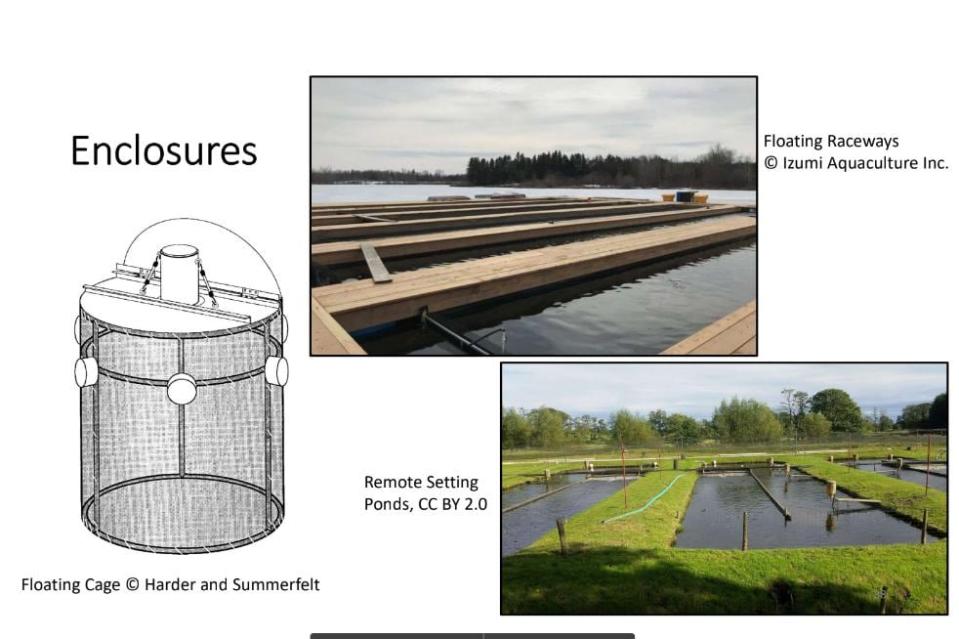
This slide from the fish committee's public presentation in March 2023 shows designs for potential enclosures. (Golden Lake Property Owners Association Fish Committee)
The plan
The committee's plan is to raise fingerlings during the summer in protective nursery cages until — much like the walleye from 1946 — they're strong enough to go fin-to-fin with predators like rainbow smelt.
"Hopefully, by the time we get to the end of October, beginning of November, we get a fish that is as large as the smelt — but most probably larger — and won't serve as [their] lunch," said Heinermann. "It will be a serious competitor."
They've come up with a five-year plan for their work, which Bishop said includes building and installing outdoor cages, collecting data and eventually launching an indoor nursery that could raise mature fish for other lakes.
They've budgeted roughly $350,000 for the project, and they've submitted their plan to Ontario's Ministry of Natural Resources and Forestry.
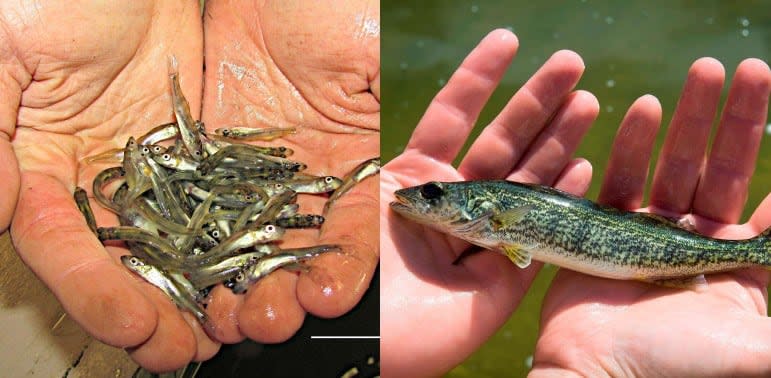
At left, several walleye summer fingerlings. At right, one significantly larger fall fingerling. (U.S. Fish and Wildlife Service/Michigan Department of Natural Resources)
'Seems to make sense'
The plan has early support from their neighbours, the Algonquins of Pikwakanagan First Nation, and their chief, Greg Sarazin.
"Walleye has been a food staple for the Algonquin nation forever," said Sarazin, who's fished on the lake for decades.
"There's still walleye there, but it takes a lot more effort. You don't catch them the way you used to catch them," he said. "I'm supportive of anything that might work. And the plan that they've laid out to us seems to make sense."
It also makes sense to John Yakabuski, the Progressive Conservative MPP for Renfrew—Nipissing—Pembroke who served as Ontario's minister of natural resources and forestry until 2021.
"The survival rate would go up exponentially for those fish," said Yakabuski.
"It looks very good from the point of view of the ministry. It is a different way of doing things, so you've got to jump through some hoops, but we believe we're on the right track."
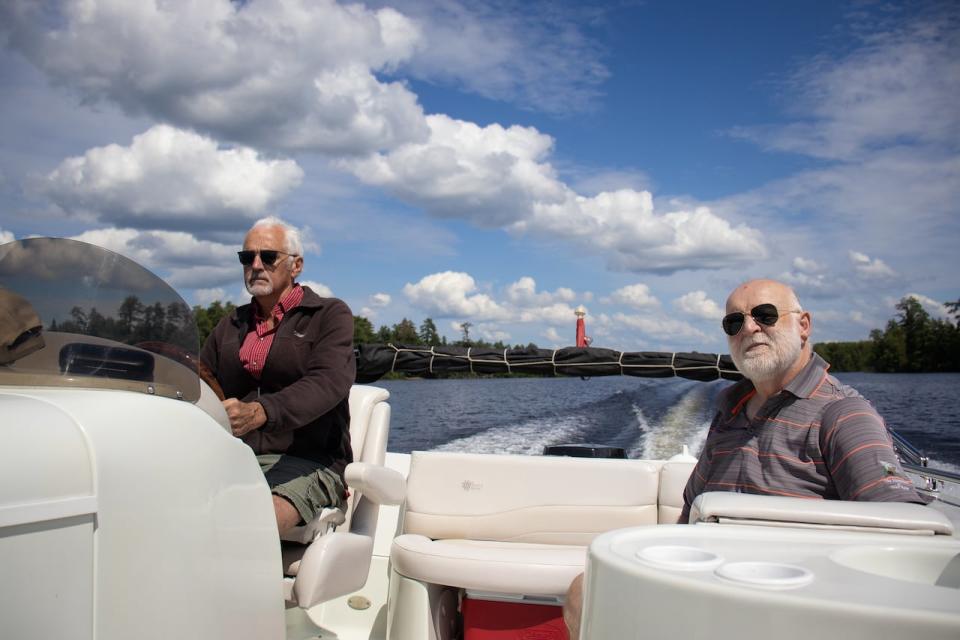
Don Bishop, left, and Peter Heinermann, right, cruise along Golden Lake in July 2023. They're confident that if their plan proves successful, it can be applied to other Canadian lakes. (Trevor Pritchard/CBC)
'A solution for all of Ontario'
One of those hoops is just getting the fingerlings from the province. Bishop says they're still waiting, and they may have to press pause and launch in earnest in spring of 2024.
There have been "multiple factors" that may have influenced walleye numbers on the lake over the years, including overfishing and habitat changes, according to a statement from the ministry.
In "recent years," some larger summer and fall fingerlings have been stocked there, and they should be able to survive the predation by rainbow smelt, the statement said.
"[We are] currently evaluating approaches to support a healthy walleye population and the greater fish community of Golden Lake and will continue to work with interested parties on any required applications," the ministry said.
CBC asked if the ministry would provide funding for the nursery project, but did not get a direct answer.
Still, both Bishop and Heinermann say their plan makes economic sense — fingerlings cost "pennies per fish," notes Heinermann — and if raising the juvenile walleye themselves proves successful, it could serve as a template for other lakes.
"Once we can demonstrate that [we can make it work], I think it will be a very favourable argument for using this approach elsewhere," said Heinermann.
"We're making a solution for all of Ontario," added Bishop. "And I'm sure it can go beyond that, too."


